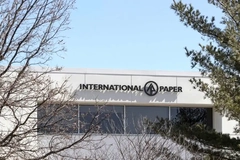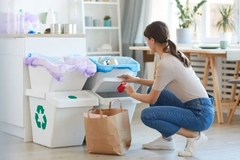Tipa identifies overwhelming support for compostables as boost to EU bio-waste recycling

29 Mar 2021 --- A Tipa-commissioned review has found “landslide expert support” for compostable packaging across the EU to reduce plastic contamination in organic waste streams and increase the amount of food waste captured for recycling.
Ricardo Energy environmental consultancy investigated the opportunities and barriers for compostable packaging in the EU through desk-based research and interviews with stakeholders across the compostables value chain in France, Germany, Italy, Spain and the UK.
Some 72 percent of respondents said compostable packaging would help increase the amount of food waste captured and decrease plastic contamination. All respondents agreed conventional plastic packaging poses a challenge to organic waste streams.
“Those interviewed included policymakers, organic recyclers, EPR (Extended Producer Responsibility) schemes, compostable material trade associations, organic recyclers trade associations and wider industry experts,” Daphna Nissenbaum, Tipa CEO and co-founder, tells PackagingInsights.
The EU’s Waste Framework Directive (WFD) is targeting a municipal waste recycling rate of 65 percent by 2035. Bio-waste – including food waste – is the largest single component of municipal waste.  Daphna Nissenbaum, Tipa CEO and co-founder.
Daphna Nissenbaum, Tipa CEO and co-founder.
“Compostable packaging will become increasingly more necessary as the EU ramps up its bio-waste recycling,” comments David Newman, managing director of the European Circular Bioeconomy Policy Initiative.
“Reducing plastic contamination in organic waste streams is something the EU must be prioritizing to reach its recycling targets and decontaminate soils from plastics spread through composting and anaerobic digestion; as this report shows, new regulations and guidance are needed to support this across the continent.”
EU targets organic recycling
The findings come as the EU continues working toward a raft of plans designed to encourage organic recycling and promote the bio-based sector.
The EU is currently revising a Bioeconomy Action Plan, including recommendations for meeting the targets set out in the WFD.
The WFD mandates that bio-waste will be collected separately or recycled at source by 31 December 2023.
Badly contaminated food waste is currently sent to landfill or incineration, where it produces harmful gases including methane, 84 times more potent than carbon dioxide, according to UNECE Sustainable Energy. Tipa supplies vendors with packaging for preserving optimal freshness.
Tipa supplies vendors with packaging for preserving optimal freshness.
However, when recycled, food waste can be used for positive purposes, including natural fertilizer.
“Compostable materials are already collected via garden and food waste streams in several European countries. Italy is a real standout example of where they’re doing this right,” highlights Nissenbaum.
“Decades ago, laws were brought in to boost standards for municipal solid waste collection, and these acted as a driver to establish extensive EPR schemes and boosted the separate collection of organic waste.”
“Due to the efficacy of compostable materials to support legislation promoting the collection of organic waste, the market surged – growing by more than 150 percent in just seven years.”
Nissenbaum adds that the EU’s “ambitious” municipal waste recycling targets require governments to recognize the vital role compostables can play in bringing carbon back to soil while avoiding plastic contamination.
“If they put the legislation in place that supports these materials, we will continue to see developments in compostable materials and processing infrastructure at pace,” she says.
The food waste fight
One of compostable packaging’s key benefits is reducing food waste through municipal waste recycling. However, some question whether compostables can be as effective as conventional plastic in fending off food waste through shelf life performance.
 One of compostable packaging’s benefits is reducing food waste through municipal waste recycling.“In an ideal world, there would be no need for packaging at all, but this just isn’t the case with food hygiene and product freshness concerns,” responds Nissenbaum.
One of compostable packaging’s benefits is reducing food waste through municipal waste recycling.“In an ideal world, there would be no need for packaging at all, but this just isn’t the case with food hygiene and product freshness concerns,” responds Nissenbaum.
“Luckily, compostable packaging is developing all the time, with R&D budgets focused on ensuring compostables can perform like conventional plastics to take polluting plastic waste out of the equation.”
TIPA has successfully implemented packaging applications requiring high barrier transmission rates. It supplies multiple vendors with packaging for preserving optimal freshness conditions for perishable produce such as meat and fish.
An example of these developments is TIPA’s partnership with shelf life extension specialist PerfoTec.
“We’ve collaborated with them to create a compostable film that can double the shelf life of fresh produce, actually outperforming plastic,” continues Nissenbaum.
“This is the direction of travel for compostable materials – answering consumer concerns for the environment, giving brands the peace of mind that their products will be protected and playing a critical role in reducing plastic pollution,” she concludes.
By Joshua Poole











